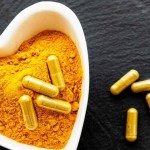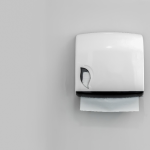Creating a Holistic Recovery Routine at Home
Warning: Undefined variable $post in /home/dietofli/public_html/wp-content/plugins/code-snippets/php/snippet-ops.php(584) : eval()'d code on line 3
Warning: Attempt to read property "ID" on null in /home/dietofli/public_html/wp-content/plugins/code-snippets/php/snippet-ops.php(584) : eval()'d code on line 3
The estimated reading time is 6 minutes
Warning: Undefined variable $post in /home/dietofli/public_html/wp-content/plugins/oxygen/component-framework/components/classes/code-block.class.php(115) : eval()'d code on line 3
Warning: Attempt to read property "ID" on null in /home/dietofli/public_html/wp-content/plugins/oxygen/component-framework/components/classes/code-block.class.php(115) : eval()'d code on line 3

Recovery is more than staying away from substances—it’s about rebuilding your life, one healthy habit at a time. While treatment centers and support groups are vital, healing continues at home. That’s where real transformation happens.
A holistic recovery routine supports not just the body, but also the mind and spirit. It helps people feel balanced, grounded, and connected to a life of purpose and well-being. The good news? You don’t need expensive tools or a perfect space. You only need intention, patience, and small daily actions that nurture your recovery.
In this article, we’ll explore how to create a holistic recovery routine at home and why it matters so much.
What Is a Holistic Recovery Routine?
A holistic routine includes physical, emotional, mental, and spiritual care. It goes beyond avoiding substances—it’s about creating a lifestyle that supports healing in every part of your life.
This might include:
- Nutritious meals
- Regular sleep and movement
- Mindfulness or meditation
- Creative expression
- Connection with others
- Time in nature or quiet reflection
According to the Substance Abuse and Mental Health Services Administration (SAMHSA), recovery is most sustainable when it includes health, home, purpose, and community—all of which can be supported through daily routines 1.
Why Routine Matters in Recovery
Structure creates safety. During addiction, life may feel chaotic and unpredictable. A routine offers stability. It builds confidence, reduces stress, and helps manage triggers or cravings.
A 2020 study in Journal of Substance Use found that individuals who maintained consistent daily routines had lower relapse rates and improved emotional well-being compared to those without structure 2.
Holistic routines also give you tools to cope with hard days. They remind you that you have control over your choices—and your healing.
1. Start with a Morning Routine
How you start your day shapes your mindset. A mindful morning routine sets a positive tone and helps you feel more in control.
Try this:
- Wake up at the same time each day (even on weekends)
- Make your bed—a small win to begin the day
- Stretch or do light movement
- Drink a glass of water to hydrate your body
- Journal or set an intention (e.g., “Today, I choose peace.”)
You can also include a few minutes of meditation or breathing exercises to clear your mind.
2. Nourish Your Body with Healthy Food
What you eat affects how you feel—physically and emotionally. Addiction can deplete your body of key nutrients, especially B vitamins, magnesium, and omega-3 fatty acids.
A 2017 study in Nutrients found that nutrition plays a key role in mental health and substance use recovery by improving mood and brain function 3.
Eat foods that support recovery:
- Leafy greens, berries, and colorful vegetables
- Whole grains like oats and quinoa
- Protein from eggs, legumes, fish, or lean meats
- Healthy fats from nuts, seeds, and avocado
- Plenty of water and herbal teas
Try planning meals ahead and preparing simple recipes you enjoy.
3. Move Your Body—Gently and Often
You don’t need an intense workout to feel better. Even light movement boosts mood, reduces stress, and helps regulate sleep and appetite.
Exercise stimulates endorphins—your brain’s natural “feel-good” chemicals. A 2019 review in Frontiers in Psychology showed that people in recovery who exercised regularly had fewer cravings and improved emotional resilience 4.
Ideas to include movement in your routine:
- Morning walks
- Gentle yoga or stretching
- Dance to your favorite music
- Short home workouts (10–20 minutes)
- Bike rides or nature hikes when possible
Pick what feels good and start small. Consistency matters more than intensity.
4. Create a Mindfulness Practice
Stress, anxiety, and emotional triggers can lead to relapse. Mindfulness helps you pause, breathe, and respond—rather than react.
Mindfulness doesn’t require hours of silence or perfect focus. It simply means being present. Whether you’re drinking tea, walking, or journaling—bring your attention to the moment.
A 2021 meta-analysis in Substance Use & Misuse found that mindfulness-based approaches significantly reduced relapse and improved emotional regulation in people recovering from substance use disorders 5.
Mindfulness tools for your routine:
- 5-minute guided meditations (use apps like Insight Timer or Calm)
- Box breathing or 4-7-8 breath technique
- Body scan meditation before bed
- Gratitude journaling each evening
5. Make Time for Connection
Isolation can be dangerous in recovery. Staying connected to people who understand and support you is crucial.
Social support improves mental health and strengthens commitment to recovery. According to Psychology of Addictive Behaviors, people with strong social networks are more likely to stay sober 6.
Connection ideas:
- Join a virtual or local support group (like SMART Recovery or AA)
- Schedule weekly calls or meetups with a trusted friend or mentor
- Share your goals and check in regularly
- Volunteer or get involved in a community project
You don’t have to share everything—just stay connected.
6. Honor Rest and Sleep
Healing requires rest. Addiction and stress disrupt sleep patterns, which can affect mood, memory, and decision-making.
Aim for 7–9 hours of quality sleep each night. Create a calming evening routine to wind down.
Try:
- Turning off screens 1 hour before bed
- Drinking chamomile or herbal tea
- Doing light stretches or reading
- Journaling thoughts or worries before sleep
Good sleep supports better focus, stronger immunity, and greater emotional balance.
7. Nurture the Spirit
Holistic recovery also means reconnecting with what gives you meaning. For some, that’s faith. For others, it’s creativity, nature, or quiet reflection.
This spiritual connection provides hope, purpose, and inner strength.
Explore:
- Sitting in nature
- Creating art, music, or poetry
- Practicing gratitude
- Attending spiritual services or reading inspirational texts
- Spending time in silence
You don’t need to define your beliefs—just find what brings peace and inspiration.
Final Thoughts: Build Your Routine, One Step at a Time
Creating a holistic recovery routine at home isn’t about perfection. It’s about progress. Small, daily habits build strength over time. They give your body rest, your mind clarity, and your spirit direction.
Start with one or two changes. Add as you go. Let your routine reflect who you are and where you want to go.
You are worthy of a life filled with balance, peace, and purpose. Your healing begins at home—with the choices you make every day.
Sources
- SAMHSA. (2023). Recovery and Recovery Support. https://www.samhsa.gov ↩
- Smith, J. et al. (2020). Routines and relapse risk. Journal of Substance Use. ↩
- De Timary, P., et al. (2017). Nutrition and addiction recovery. Nutrients. ↩
- Wang, D., et al. (2019). Exercise as treatment for substance use. Frontiers in Psychology. ↩
- Li, W., et al. (2021). Mindfulness in substance use treatment. Substance Use & Misuse. ↩
- Laudet, A. B., et al. (2006). Social support and recovery. Psychology of Addictive Behaviors. ↩














